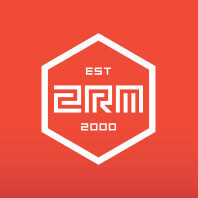
Spring is fast approaching — which means that in the marketing world, tradeshow season is back! With more trade shows scheduled to be in-person events, consider upgrading your trade show marketing toolkit with QR codes to increase customer engagement at your booth.
QR codes were not widely used in the past due to limited technology and consumer awareness, as well as scanning difficulties. However, their popularity has resurged in recent years due to advancements in technology, increased smartphone use, and their adoption during the COVID-19 pandemic for contact tracing and touchless interactions.
What Is a QR Code?
As a reminder, a quick response (QR) code is a two-dimensional matrix barcode that can be scanned by mobile devices to access stored data such as websites, payment options, and more.
QR codes are available in two types: dynamic and static. Dynamic codes can be changed because the URL destination isn’t integrated into the code pattern. Static codes can’t be changed; the URL destination is integrated into the code pattern.
Each type has its pros and cons.
QR Code Uses at Trade Shows
One primary goal for trade show attendance is promotion and engagement. Companies want to make a lasting impression on their customers, and QR codes can help to achieve that by giving customers an engagement tool to learn more or take action.
Here are a few ways you can use QR codes to enhance customer and booth engagement:
Get interactive: Entice customers with a giveaway, sweepstakes, or prize when they visit your booth and enter to win using the QR code. From there, you can engage with these potential customers and educate them on your products and services.
Grow social media: Gain new followers by linking QR codes to your social media channels. Social channels can help to grow a relationship with potential customers.
Offer instant content: Allow customers direct access to valuable content that they can easily download, keep, or bookmark. Another plus: This can also reduce printing and shipping costs, showing off your company’s eco-friendliness.
Collect leads: Looking to gain more potential leads? Drive customers to a form for them to submit to receive more information or opt in to communications.
Book a meeting: Having a great conversation at a show and want to continue at a later time? Use a QR code to direct attendees to a scheduling tool where they can quickly and easily book meetings with the sales team.
Choosing the Right Code Type
Once the QR code tactic is determined, which code type is the right one?
For trade shows, dynamic QR codes are recommended for the following reasons:
Codes can be customized with a company logo, colors, and branding.
URLs can be edited if needed.
Common analytics include total number of scans, time and date of each scan, location of the scan, the type of device used (e.g. smartphone or tablet), and the operating system of the device.
Next, decide what information will be provided when a visitor scans the QR code. A few common dynamic trade show code types are:
Product information QR code: Great for sharing information about specific products or services. Use it to link to product pages, campaign landing pages, PDF brochures, videos, or other marketing materials.
vCard/contact information QR code: Continue important conversations by sharing contact information to keep in touch.The code can encode details such as name, company, email, phone number, and website URL.
Event schedule QR code: Use this type of QR code to share the schedule of events, seminars, and workshops at the trade show. Attendees can scan the code to view the schedule on their smartphone.
Social media QR code: Connect attendees with your brand's social media accounts on platforms like Facebook, Instagram, YouTube, Twitter, TikTok, and LinkedIn.
Feedback QR code: Collect feedback from attendees about the trade show. Attendees can scan the code and fill out a survey or feedback form on their smartphone.
App store QR code: Encourage attendees to download your app by linking them to your app on Apple or Google Play Store.
QR Code Best Practices
Nothing is more frustrating to a QR code user than a bad experience. They likely won’t give you another chance, so get it right the first time by adhering to the following best practices:
Use QR code tracking and analytics tools to measure the effectiveness of your QR code campaigns. This will allow you to see how many people scanned the code, where they came from, and what actions they took after scanning.
Pick the right code generator for the features you need. Generators come in free and paid versions that can allow the code to be branded, provide metrics, and be reusable.
Provide clear instructions on what the QR code leads to and what attendees can expect to find after scanning it.
Test the QR codes on multiple devices before the event to ensure that they work correctly and lead to the intended destination.
Connect your last tip to make sure your QR codes are prominently displayed in areas that are easily visible to attendees.
Integrating QR codes into your booth design is a great way to attract customers’ attention and boost engagement. Some examples include adding the code to pull-up banners, swag giveaways, or even a coffee sleeve.
Trade shows are a great way to increase brand awareness and attract new customers. Need help upgrading your trade show marketing toolkit? Contact us for ideas!


 By Two Rivers Marketing
By Two Rivers Marketing By Patrick McGill
By Patrick McGill